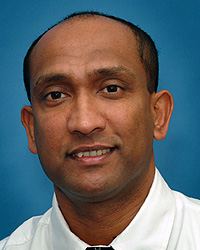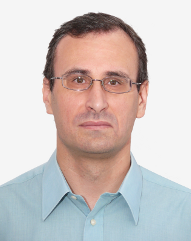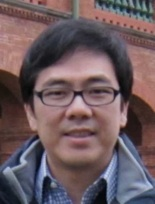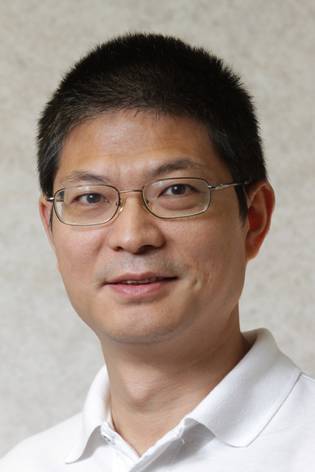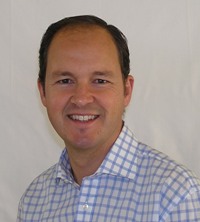|
|
Tutorials
Tutorial speaker |
Topic |
Prof.J. Marcos Alonso
|
|
|
|
|
|
Prof. Ramon Blasco-Gimenez
|
|
|
|
Topic: LED Lighting and Drivers |
|
Prof. J. Marcos Alonso
University of Oviedo, in Asturias, Spain
|
Brief biography |
Prof. Alonso received the M. Sc. Degree and Ph. D. both
in electrical engineering from the University of Oviedo, Spain, in 1990 and 1994
respectively. Since 2007, he is a full Professor at the Electrical Engineering Department
of the University of Oviedo, in Asturias, Spain.
Prof. Alonso is co-author of more than 300 journal and conference publications,
including more than 70 publications in highly referenced journals. His research interests
include electronic ballasts, LED power supplies, power factor correction, dc-dc
converters, soft-switching converters, resonant inverters and high frequency switching
converters in general. He was supervisor of 8 Ph.D. Thesis and he is the holder of 7
Spanish patents. He has participated in more than 50 research projects and contracts
with companies. He has been a visiting researcher at the Federal University of Santa
Maria, Santa Maria, Brazil, in 2011 and 2014, and at the Center for Power Electronics
Systems, Virginia Tech., Blacksburg, USA, in 2013.
Prof. Alonso has been awarded with the Early Career Award of the IEEE Industrial
Electronics Society in 2006. He was honored with the University of Oviedo Electrical
Engineering Doctorate Award for 1996. Prof. Alonso was also awarded with the
National Funding for Intensification of Research Activity for the period 2008-2012. He
also holds three IEEE paper awards. Since 2002, he serves as an Associate Editor of the
IEEE Transactions on Power Electronics. He has been Guest Editor of two special
issues in lighting applications published in IEEE Transactions on Power Electronics
(2007) and IEEE Transactions on Industrial Electronics (2012) and has organized
several IEEE Conference Special Sessions. He presently serves as Secretary of the IEEE
IAS Industrial Lighting and Display Committee (ILDC). He has been elected as
Member-at-Large of the IEEE IAS Executive Board for the term 2013-2014. He is a
member of the Power Electronics Technical Committee (PETC) of the IEEE Industrial
Electronics Society. He is also a member of the European Power Electronics
Association and he belongs to the International Steering Committee of the European
Conference on Power Electronics and Applications (EPE).
|
Abstract |
LEDs are becoming an attractive light source owing to their high reliability, long life, high color
rendering index and small size. In addition, there are commercially available units that can reach a
luminous efficacy as high as 100 lumen/W. These features make LEDs excellent candidates to
override fluorescent and other discharge lamps in many applications, including street-lighting,
automotive lighting, decorative applications and household appliances. However, power LEDs are
still far from being a panacea since they still suffer from several drawbacks. First, due to their nearly
constant-voltage behavior, they cannot be supplied from the dc or ac voltage source directly.
Therefore, some kind of current-limiting device must be used, similarly to the ballast used to limit the
current through a discharge lamp. On the other hand, the high efficacy of power LEDs is only
maintained under tight operating conditions, which include low direct current and low junction
temperature. This talk will deal with topics related to LED driving, including: introduction to lighting
and vision, color theory, LED behavior and modeling, thermal management, dimming, DC-supplied
LED drivers and off-line LED drivers.
|
|
Topic: Grid Integration of Electric Vehicles: Wired and Wireless Solutions |
|
Prof. Udaya K. Madawala
University of Auckland, New Zealand
|
Brief biography |
Udaya K. Madawala (Senior Member IEEE) graduated with B. Sc. (Electrical Engineering) (Hons) from The University of Moratuwa, Sri Lanka in 1987 and received his PhD (Power Electronics) from The University of Auckland, New Zealand in 1993 as a Commonwealth Scholar. At the completion of his PhD, he was employed by Fisher & Paykel Ltd, New Zealand, as a Research and Development Engineer to develop new technologies for motor drives in washing machines. In 1997, he joined the Department of Electrical and Computer Engineering at The University of Auckland as a Research Fellow, and is currently works as a Full Professor, focusing on a number of energy related power electronics projects.
Professor Madawala has over 27 years of both industry and research experience in the fields of power electronics and magnetics. At present, he serves as an Associate Editor for IEEE Transactions on Industrial Electronics and IEEE Transactions on Power Electronics, and is a member of the Power Electronics Technical Committee and Renewable Energy Committee of IEEE Industrial Electronic Society and Power Electronics Society, respectively. He has approximately 200 international journal and conference publications, and holds a number of patents on Inductive Power Transfer and power converters with several pending. His research interests are in the fields of renewable energy, power electronics and inductive power transfer, for which he renders his service as a consultant to industry.
|
Abstract |
Renewable Energy (RE) sources, energy storage systems and Electric Vehicles (EVs) can be considered as partial solutions to global energy crisis as well as for sustainable living. The interface that facilitates either uni- or bi-directional power flow between the grid and EVs/REs is an indispensable component of all these solutions. An efficient, compact and reliable power interface is, therefore, vital for grid integration of both EVs and REs. Consequently, grid integration has become one of the main focuses of current research in both industrial and academic community.
This tutorial presents trends, together with the latest advances, in grid integration of EVs. Both wired and wireless solutions, employed for grid integration of EVs, are discussed along with battery management systems. Inductive Power Transfer (IPT) technology, widely used for wireless grid integration of EVs, is discussed in detail, covering both uni- and bidirectional power flows. Different concepts and control strategies that have been proposed and implemented as wired solutions are also presented.
|
|
Topic: HVDC Grids and Renewable Energy Integration |
|
Prof. Ramon Blasco-Gimenez
Technical University of Valencia, Spain
|
Brief biography |
Prof. Ramon Blasco-Gimenez obtained his BEng. degree from the Technical University of Valencia, Spain, in 1992, and his Ph.D. degree in Electrical and Electronic Engineering from the University of Nottingham, U.K., in 1996.
From 1992 to 1995, he was a Research Assistant in the Department of Electrical and Electronic Engineering, University of Nottingham. He is currently a Professor at the Dept. of Systems Engineering and Control of the Technical University of Valencia, where he teaches advanced control techniques and control of drives.
He has been a consultant to main Spanish utilities on integration of wind farms in weak grids and to large wind farm operators on risk based operation and maintenance of off-shore wind farms. His research interests include control of motor drives, wind power generation, off-shore wind farms and grid integration of renewable energy.
Prof. Blasco-Gimenez has been a co-recipient of the 2005 IEEE Transactions on Industrial Electronics Best Paper Award. He is a Senior Member of the IEEE, member of the Electrimacs Committee, Chartered Engineer (U.K.), member of the Institute of Engineering and Technology and guest researcher of the Solar Energy Research Centre SERC-Chile. Prof. Blasco-Gimenez is currently the chair of the IEEE Industrial Electronics Society Renewable Energy Technical Committee.
|
Abstract |
HVDC grids are being developed to integrate large amounts of renewable energy into the electric system, to allow for easier integration of electric systems and markets and to connect load centers to renewable energy generation centers. The increased efficiency and reduced cost of current power electronics solutions have made the use of HVDC grids more competitive. However, important technical challenges need to be addressed, such as response to DC faults, interaction between AC and DC grids, DC-DC converters and power flow control in HVDC grids. At this scale, the wind power plants (WPPs) and PV plants, should be able to provide ancillary services and contribute to system restoration during black-outs. The tutorial will cover the aforementioned issues, including also converter topologies to be used in HVDC grids, their control and how both WPPs and PV plants can contribute to service restoration.
|
|
Topic: Applying Circuit Theory Seriously: From Ohm's Law and Duality to the Latest LED Driving and IPT Technologies |
|
Prof. C.K. Michael Tse
Hong Kong Polytechnic University, Hong Kong
|
Brief biography |
C. K. Michael Tse graduated from the University of Melbourne, Australia, with BEng (First Class Honors) and PhD degrees in 1988 and 1991, respectively, both in electrical engineering. He is presently Chair Professor at Hong Kong Polytechnic University, with which he served as Head of the Department of Electronic and Information Engineering from 2005 to 2012. He is author/coauthor of 7 books, 15 book chapters and over 500 papers in research journals and international conference proceedings, and holds 5 US patents. He was awarded a number of research and industry awards, including Best Paper Award by IEEE Transactions on Power Electronics 2001, Best Paper Award by International Journal of Circuit Theory and Applications in 2003, two Gold Medals at the International Inventions Exhibition in Geneva in 2009 and 2013, and a number of recognitions by the academic and research communities, including honorary professorship by several Chinese and Australian universities, IEEE Distinguished Lectureship, Distinguished Research Fellowship by the University of Calgary, Gledden Fellowship and International Distinguished Professorship-at-Large by the University of Western Australia.
Prof. Tse serves and has served as Editor-in-Chief for IEEE Circuits and Systems Magazine, Editor-in-Chief for IEEE Circuits and Systems Newsletter, Associate Editor for two IEEE Transactions, Editor for Int J Circuit Theory and Applications, and is on the editorial boards of a few other journals. Back home, he serves as panel member of Hong Kong Research Council and NSFC, and member of several professional and government committees. Prof. Tse is a Fellow of IEEE and a Fellow of IE Australia.
|
Abstract |
Much of the power electronics discipline has been built upon the application of circuit theory. However, in the process of developing solutions for new applications, the proper use of circuit theory has not always been borne in mind, leading to unnecessary repetition and reinvention of concepts that would otherwise be reached directly if the approach taken had thoroughly considered the existing knowledge in circuits and systems. In this tutorial, the role of circuit theory will be revisited and examples will be shown to illustrate how proper application of existing circuit theory would conveniently lead to important observations and conclusions that would save re-investigation or expedite understanding of the problems. Specific applications of current interest to be tentatively covered in this short tutorial include LED driving, power factor correction, parallel-connected converters, inductive power transfer, etc. In each application, the basic circuit theory relevant to analysis and design of the system in question will be expounded and its proper use will be shown to be crucial in gaining significant improvement in understanding the key properties and systematic generation of design solutions. It will be shown that even the basic principles of circuit duality and Kirchhoff’s laws are not always appropriately exploited in power electronics, let alone proper application of these principles that would lead to systematic design approaches for LED driving and interconnection of power converters. Furthermore, consideration of effect of parameter changes in conventional resonant circuits would be discussed, and its applications leading to systematic understanding of the design problems and classification of solution approaches inductive power transfer circuits will be briefly illustrated.
|
|
Topic: Battery Management Systems for Electric Drive Vehicles and Grid Storage |
|
Prof. Chris Mi
San Diego State University, California, USA
|
Brief biography |
Chris Mi is a fellow of IEEE, Professor and Chair of the Department of Electrical and Computer Engineering, and the Director of the US DOE funded GATE Center for Electric Drive Transportation at San Diego State University, San Diego, California, USA. He was previously a professor at the University of Michigan, Dearborn from 2001 to 2015. He received the B.S. and M.S. degrees from Northwestern Polytechnical University, Xi’an, China, and the Ph.D. degree from the University of Toronto, Toronto, Canada, all in electrical engineering. Previously he was an Electrical Engineer with General Electric Canada Inc. He was the President and the Chief Technical Officer of 1Power Solutions, Inc. from 2008 to 2011. He is the Co-Founder of Gannon Motors and Controls LLC and Mia Motors, Inc.
His research interests are in electric and hybrid vehicles. He has taught tutorials and seminars on the subject of HEVs/PHEVs for the Society of Automotive Engineers (SAE), the IEEE, workshops sponsored by the National Science Foundation (NSF), and the National Society of Professional Engineers. He has delivered courses to major automotive OEMs and suppliers, including GM, Ford, Chrysler, Honda, Hyundai, Tyco Electronics, A&D Technology, Johnson Controls, Quantum Technology, Delphi, and the European Ph.D School. He has offered tutorials in many countries, including the U.S., China, Korea, Singapore, Italy, France, and Mexico. He has published more than 100 articles and delivered 30 invited talks and keynote speeches. He has also served as a panelist in major IEEE and SAE conferences.
Dr. Mi is the recipient of “Distinguished Teaching Award” and “Distinguished Research Award” of University of Michigan Dearborn. He is a recipient of the 2007 IEEE Region 4 “Outstanding Engineer Award,” “IEEE Southeastern Michigan Section Outstanding Professional Award.” and the “SAE Environmental Excellence in Transportation (E2T) Award.” He was also a recipient of the National Innovation Award and the Government Special Allowance Award from the China Central Government. In December 2007, he became a Member of Eta Kappa Nu, which is the Electrical and Computer Engineering Honor Society, for being “a leader in education and an example of good moral character.”
Dr. Mi was the Chair (2008-2009) and Vice Chair (2006-2007) of the IEEE Southeastern Michigan Section. Dr. Mi was the general Chair of the 5th IEEE Vehicle Power and Propulsion Conference held in Dearborn, Michigan, USA in September 6-11, 2009. Dr. Mi is one of the three Area Editors of the Editor of IEEE Transactions on Vehicular Technology, associate editor of IEEE Transactions on Power Electronics, Associate Editor of IEEE Transactions on Industry Applications. He served on the review panel for the NSF, the U.S. Department of Energy (2007–2010), the Natural Sciences and Engineering Research Council of Canada (2010), Hong Kong Research Grants Council, French Centre National de la Recherche Scientifique, Agency for Innovation by Science and Technology in Flanders (Belgium), and the Danish Research Council. He is the topic chair for the 2011 IEEE International Future Energy Challenge, and the General Chair for the 2013 IEEE International Future Energy Challenge. Dr. Chris Mi is a Distinguished Lecturer (DL) of the IEEE Vehicular Technology Society.
He is also the General Co-Chair of IEEE Workshop on Wireless Power Transfer sponsored by six IEEE Societies (PELS, IAS, IES, VTS, MAG, and PES), Guest Editor-in-Chief of IEEE Journal of Emerging and Selected Topics in Power Electronics - Special Issue on WPT, Guest Co-Editor-in-Chief of IEEE Transactions on Power Electronics Special Issue on WPT, Guest Editor of IEEE Transactions on Industrial Electronics - Special Issue on dynamic wireless power transfer, and steering committee member of the IEEE Transportation Electrification Conference (ITEC- Asian). He is the program chair for the 2014 IEEE International Electric Vehicle Conference (IEVC) in Florence Italy December 17-19, 2014. He is also the chair for the IEEE Future Direction’s Transportation Electrification Initiative (TEI) e-Learning Committee and developed an e-learning module on wireless power transfer.
|
Abstract |
Electric vehicles (EV) and plug-in hybrid electric vehicles (PHEV) have attracted worldwide attentions because their capabilities to displace petroleum usage and improve energy and environment sustainability. One of the key constraints for mass market penetration of EV and PHEV is the high cost of the battery system as well as the safety and reliability concerns of the battery system. Battery management systems deal with these issues effectively to ensure safe and reliable operation of the battery system, extend the life of battery, and maximize the drive range. On the other hand, power electronics are widely used in EV and PHEV battery systems, such as battery charger, battery control units (DC-DC converter), battery cell balancing circuits, and battery protection circuits. These power electronics units must address the unique characteristics of different batteries and assure safe operation of the battery system, and effectively work with the battery management system (BMS). Proper design of the BMS and associated micro and power electronic circuits can help optimize the system efficiency and reduce cost while extend the life expectance and increase safety of the battery system.
This course covers four main topics: (1). Energy storage system basics for power electronic engineers with focus on lithium ion batteries; (2). Battery management systems; (3). The application of power electronics in the battery system of an EV and PHEV, including on board and off board battery charger, DC-DC converter, battery monitoring, control, balancing, and protection circuits. (4). Battery safety basics. (5) Battery modeling and parameter identification; (6) battery diagnostics and prognostics. (7). Wireless charging of electric vehicle. The seminar will focus on the unique aspects of these power electronic circuits in EV and PHEV applications. Conductive, inductive, and wireless chargers will be discussed. Vehicle to grid (V2G) concepts and grid energy storage will be briefly introduced.
Objective: the objective is to provide power electronics engineers and students the knowledge they need to work in the area of batteries in electric drive vehicles and grid storage.
|
|
|
